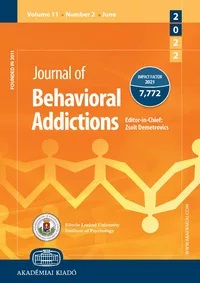Ultra-processed food intake and eating disorders: Cross-sectional associations among French adults
Ultra-processed food intake and eating disorders: Cross-sectional associations among French adults
Author(s): Natasha Figueiredo, Junko Kose, Bernard Srour, Chantal Julia, Emmanuelle Kesse-Guyot, Sandrine Péneau, Benjamin Allès, Indira Paz-Graniel, Eloi Chazelas, Mélanie Deschasaux-TanguySubject(s): Behaviorism
Published by: Akadémiai Kiadó
Keywords: eating disorders; anorexia nervosa; bulimia nervosa; binge eating disorder; ultra-processed food; epidemiological study
Summary/Abstract: Background and aims. Data regarding the association between ultra-processed food (UPF) consumption and eating disorders (ED) are scarce. Our aim was to investigate whether UPF intake was associated with different ED types in a large population-based study. Methods. 43,993 participants (mean age = 51.0 years; 76.1% women) of the French NutriNet-Santé web-cohort who were screened for ED in 2014 via the Sick-Control-One stone-Fat-Food (SCOFF) questionnaire, were included in the analysis. The clinical algorithm Expali TM tool was used to identify four ED types: restrictive, bulimic, binge eating, and other (not otherwise specified). Mean dietary intake was evaluated from at least 2 self-administered 24-h dietary records (2013–2015); categorization of food as ultra-processed or not relied on the NOVA classification. The associations between UPF intake (as percent and reflecting mean daily UPF quantity (g/d) within the dietary intake, %UPF) and ED types were evaluated using polytomous logistic regression models. Results. 5,967 participants (13.6%) were categorized as likely ED (restrictive n = 444; bulimic n = 1,575; binge eating n = 3,124; other ED n = 824). The fully-adjusted analyses revealed a positive association between UPF intake and bulimic, binge eating, and other ED: ED risk (odds ratio, OR) for an absolute 10-percentage point incremental increase in %UPF intake were 1.08 (1.01–1.14; P = 0.02), 1.21 (1.16–1.26; P < 0.0001), and 1.11 (1.02–1.20; P = 0.02), respectively. No significant association was detected for restrictive ED. Discussion and Conclusion. This study revealed an association of UPF intake with different ED types among French adults. Future research is needed to elucidate the direction of the observed associations.
Journal: Journal of Behavioral Addictions
- Issue Year: 11/2022
- Issue No: 2
- Page Range: 588-599
- Page Count: 12
- Language: English

